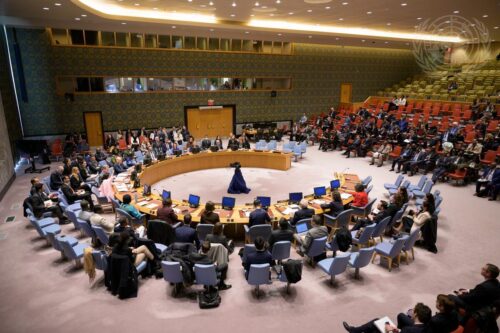U.N. Security Council Passes Resolution Safeguarding Humanitarian Action Across All U.N. Sanctions Regimes
Nearly 222 million people across 53 countries will require humanitarian assistance next year, marking a 25% increase in both need…
Nearly 222 million people across 53 countries will require humanitarian assistance next year, marking a 25% increase in both need…

Safeguarding, defined as exploitation and abuse committed by humanitarian aid workers on beneficiaries, is a complex and sensitive topic, which can be challenging to communicate. PSEA, or protection from sexual exploitation and abuse, is a type of safeguarding and is often referred to in humanitarian aid settings. Communicating rights and reporting to children carries additional significant challenges. Children are more vulnerable to exploitation and abuse than adults, due to their lower levels of agency and language to describe the types of behaviours that they are experiencing. Children are less able to speak against those in positions of power, and may be persuaded to keep inappropriate actions a secret or be more easily subjected to threats and intimidation against their loved ones. Traditional approaches to reporting mechanisms within the sector – hotlines, online platforms, and complaint boxes – may not work for children who are less likely to have access to the technology, locations, and writing skills to voice their experiences. Ensuring that we prevent and create safe spaces for children to report takes additional steps, tailored approaches, and innovation. This project aims to be the start of building a library of materials that are specifically directed to safeguarding of children.
International humanitarian and development organizations have faced increased pressure in recent years to address sexual exploitation and abuse (SEA) in…

These documents were developed by FHI 360 to adapt globally approved PSEA guidelines, tools, and promising strategies applied in humanitarian/emergency settings to prevent and respond to SEA when implementing programming in traditional development and humanitarian-development nexus contexts. The available resources are as follows: 1. FHI 360 Framework and Minimum Standards for Safeguarding Program Participants. 2. FHI 360 Safeguarding - Five Required Tools 3. FHI 360 Toolkit - How to implement FHI 360s minimum standards for safeguarding program participants. 4. FHI 360 Safeguarding - Project Checklist 5. FHI 360 Safeguarding - How to Note, standalone 6. FHI 360 Safeguarding - Awareness Raising Activities 7. FHI 360 Safeguarding - Training - Workshop - Info Session